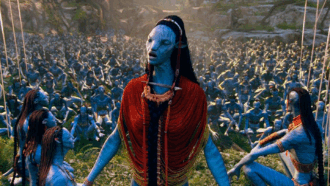Body heat due to exercise may reduce hunger
In mice, at least, the brain’s sensors for hot spices may shut down appetite following a workout

Not really up for a post-workout snack? Scientists have found an area of the brain that appears to explain why.
Rasulovs/iStockPhoto
Share this:
- Share via email (Opens in new window) Email
- Click to share on Facebook (Opens in new window) Facebook
- Click to share on X (Opens in new window) X
- Click to share on Pinterest (Opens in new window) Pinterest
- Click to share on Reddit (Opens in new window) Reddit
- Share to Google Classroom (Opens in new window) Google Classroom
- Click to print (Opens in new window) Print
After a long, tough workout, it would seem people should be ravenous. They’ve been working hard and burning calories — energy that must be replaced by fueling the body with more food. So why do most people and animals eat less after exercise? Scientists think they’ve found the answer in certain brain cells that control appetite. When they get hot and bothered, those cells appear to shut down the need to feed.
Young-Hwan Jo is a neuroscientist — someone who studies the brain. He works at Albert Einstein College of Medicine in New York City. And as an athlete, Jo admits he has a personal stake in studying exercise and appetite. “I run three times a week,” he notes, and afterward “I’m not very hungry.” Being a scientist, he wanted to know why these workouts suppressed his appetite.
As Jo thought about the role of exercise, heat kept coming to mind. “Exercise increases body temperature,” he explains. Maybe the brain was responding to warmer temperatures by reducing hunger. Jo and his team decided to test that idea. They focused on the brain’s hypothalamus because it is important in controlling appetite. Located near the center of the brain, it’s roughly behind the bridge of your nose. This tissue releases hormones — chemicals that travel in blood to reach even distant parts of the body.
The hypothalamus isn’t just one big glop of cells. Within it, small groups of nerve cells, or neurons — known as nuclei — perform different functions. One group of cells, the arcuate (AR-kew-ate) nucleus, is important in controlling appetite.
A complex layer of cells, known as the blood-brain barrier, serves to protect the brain from potential poisons that might be circulating in the blood. In the process, the blood-brain barrier also protects the brain from heat in the bloodstream. But some brain cells dangle outside this protective barrier, notes Jo — including cells in the arcuate nucleus.
Those dangling cells might sit in the right place to sense temperature and respond to the tiny fever that animals get when they exercise, he reasoned. Jo’s team would go on to show this was true. And in the April 28 PLOS Biology, they linked this heat response to appetite.
Heating it up
In mice, Jo’s team showed, brain cells in the arcuate nucleus respond to a chemical called capsaicin (Kap-SAY-sin). It’s the same molecule that gives spicy chilis their heat. Capsaicin delivers that heat by binding to a receptor — a molecule on the outside of cells that serves as a docking station. Known as the TRPV1 receptor, this molecule can sense temperature. Cells in the arcuate nucleus host plenty of TRPV1 receptors. Jo suspected that these might respond to the tiny fever animals get when they exercise.
To test their role in appetite, Jo’s team put some capsaicin in the arcuate nucleus of male and female mice. It docked with the TRPV1 receptors there and the mice ate less. Jo and his colleagues then blocked these receptors in the brains of the mice. Now, their brain cells didn’t respond to the capsaicin — and the animals ate normally.
The researchers then had their mice get in shape. They trained the animals to run on treadmills for 40 minutes at a time. After each workout, the body temperature climbed in these mice — including in their brains’ arcuate nucleus. The rodents also ate less.
As a final test of the role of those TRPV1 receptors, the scientists bred a knockout mouse. Brain cells in these animals lacked the instructions for making TRPV1 receptors. When these mice ran on the treadmills, their body temperatures went up, including in their brains’ arcuate nucleus. But this exercise-induced fever didn’t affect their appetite. These mice ate just as much as they had before exercising.
“People know that after they exercise they lose their appetite,” Jo observes. “This could be one of the mechanisms.” His team can’t say it’s the only mechanism, though. Jo admits that when it comes to the answer, TRPV1 “could be just a part.”
“It’s interesting to understand the mechanism of why, when you stop exercising, you’re not hungry,” says Alissa Nolden. She’s a food scientist at the Monell Chemical Senses Center in Philadelphia, Pa. “It’s cool you can get this kind of information [in mice] that you couldn’t get in a human,” she adds. Nolden works with people. And she knows that “injecting capsaicin into the brain [of a person] wouldn’t go over well.”
Still, Nolden cautions that receptors can change over time when they are stimulated repeatedly. If exposed to hot blood from exercise over and over and over, she says, the TRPV1 receptors might become less sensitive. Then, no matter how hot she got, an athlete might still be ravenous after her race. That’s why Nolden suspects it will take more science — and possibly more mice on treadmills — to know for sure.






